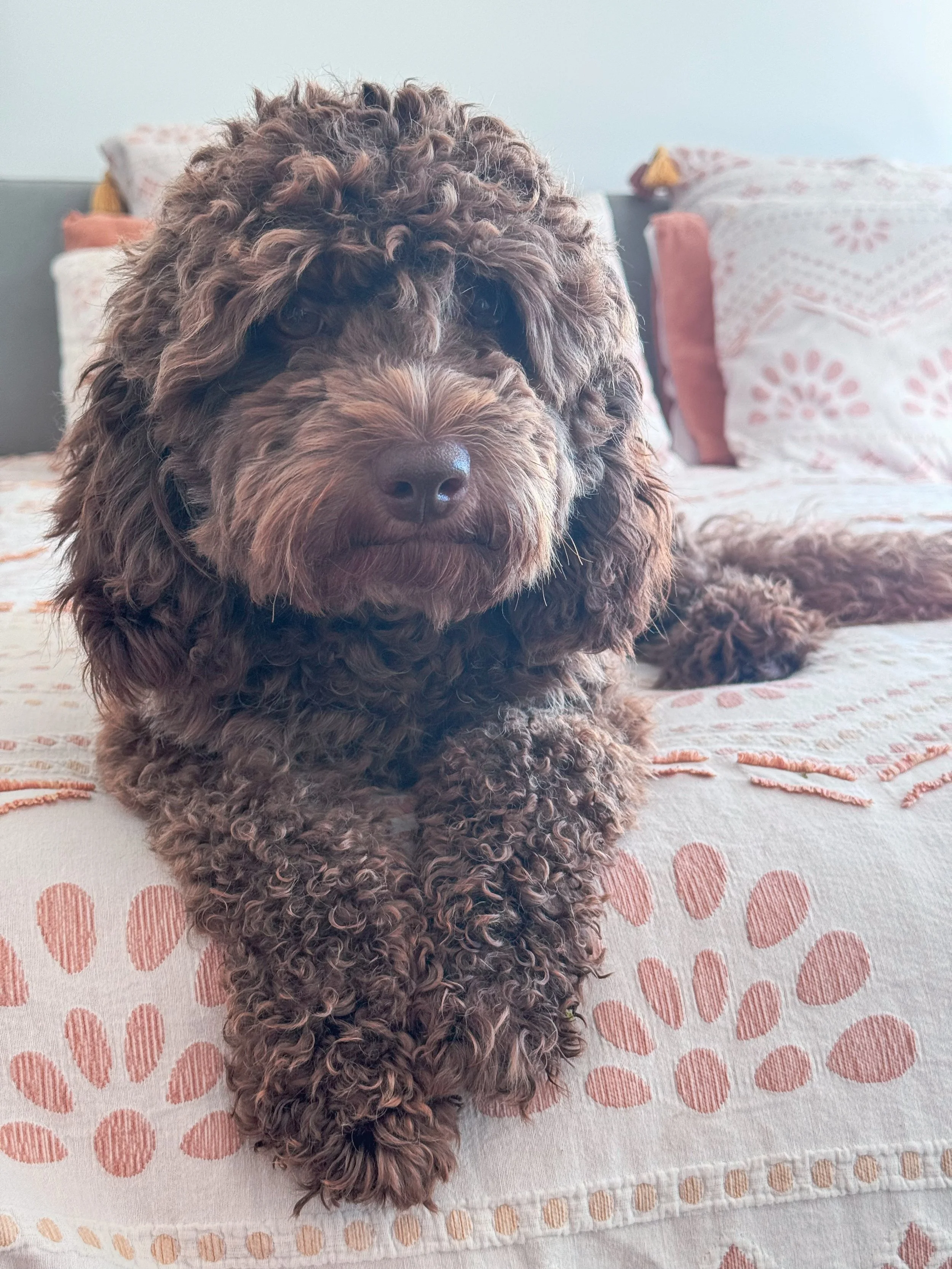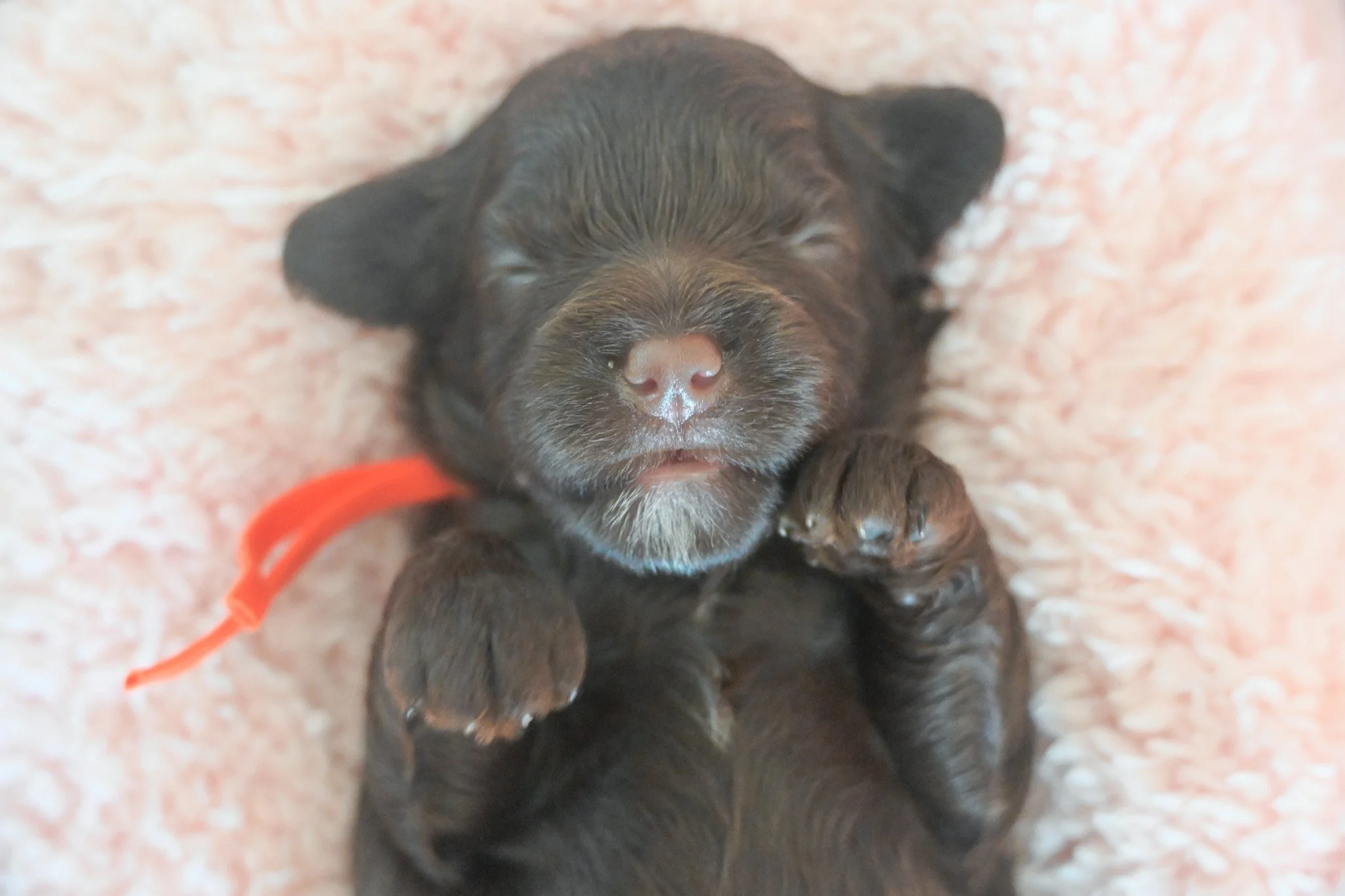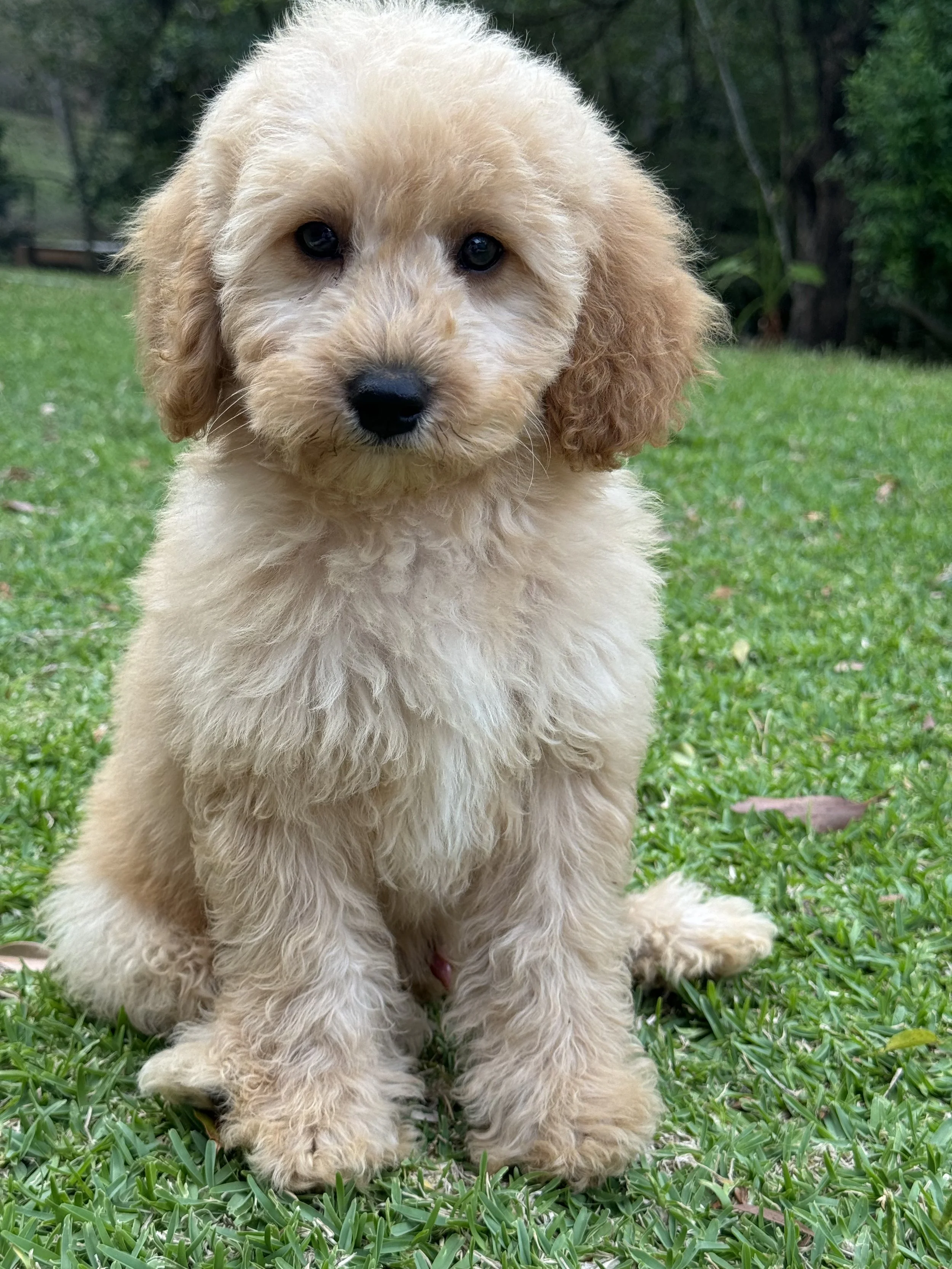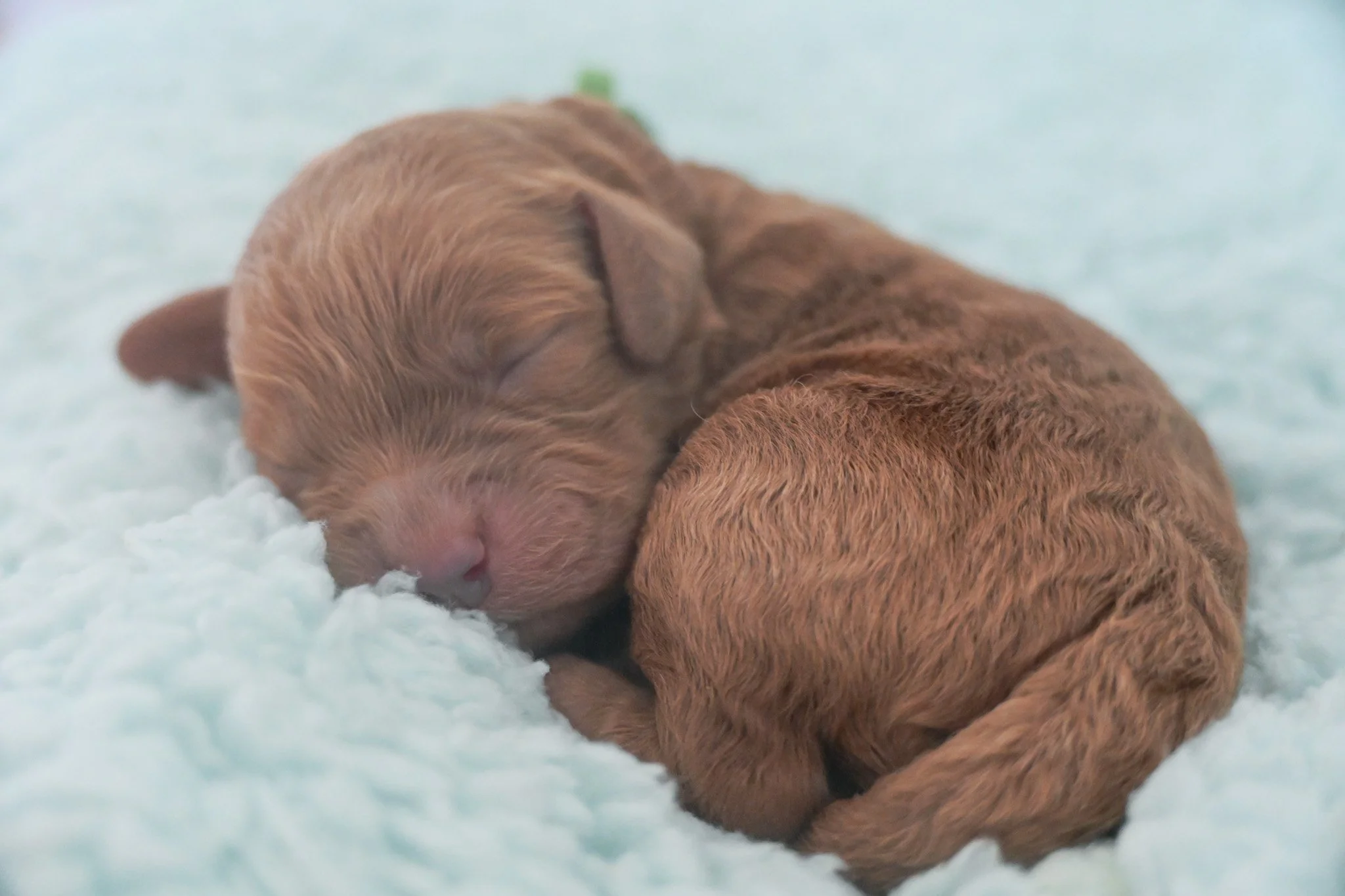The Important of a High-Quality Sire in Dog Breeding
In this blog post we talk about the role and importance in a high quality Sire in Dog Breeding
In the world of dog breeding, much emphasis is often placed on the dam, the mother of the litter. However, the significance of the sire, the father, should not be overlooked. Just as in any breeding program, the male plays a crucial role in determining the quality, health, and temperament of the offspring. In this article, we delve into the essential role of the sire in dog breeding and why selecting a high-quality male is paramount for producing healthy, well-rounded puppies.
Genetic Diversity and Health: One of the primary reasons for selecting a high-quality sire is to ensure genetic diversity and maintain the health of the breed. A healthy male with a diverse genetic background can contribute to reducing the risk of hereditary diseases and genetic disorders in the offspring. By carefully evaluating the health history and genetic background of the sire, breeders can make informed decisions to improve the overall health and vitality of the breed.
Temperament and Behavior: The temperament and behavior of the sire can significantly influence the personality traits of the puppies. Selecting a male with a stable temperament, desirable behavior traits, and good socialization skills can help produce puppies with predictable temperaments and suitable for various roles, such as family pets, working dogs, or show dogs. Breeders often look for sires with calm, confident, and trainable personalities to pass on these desirable traits to the next generation.
Conformation and Breed Standards: In breeds where conformation is important, the sire's physical attributes play a crucial role in adhering to breed standards. A high-quality sire should possess the correct structure, proportions, and breed-specific characteristics that align with the breed standard. By choosing a sire with excellent conformation, breeders can strive to produce puppies that not only meet the aesthetic standards of the breed but also have the potential for success in conformation shows and competitions.
Breeding Ethics and Responsibility: Responsible breeding practices entail selecting sires that contribute positively to the breed and promote its long-term welfare. By choosing a high-quality sire with careful consideration of health, temperament, conformation, and working ability, breeders uphold ethical standards and prioritize the well-being of the dogs they produce. Additionally, responsible breeding involves thorough health testing, genetic screening, and proper care of both the male and female dogs involved in the breeding process.
In conclusion, the importance of a high-quality sire in dog breeding cannot be overstated. From genetics and health to temperament and conformation, the sire plays a pivotal role in shaping the next generation of dogs. By selecting sires with careful consideration of their qualities and characteristics, breeders can contribute to the betterment of the breed while ensuring the production of healthy, well-adjusted puppies. Ultimately, the commitment to choosing the right sire reflects a dedication to responsible breeding practices and the preservation of breed standards and qualities for generations to come.
Cavoodles vs. Spoodles: Choosing between two delightful family companions.
Cavoodles vs. Spoodles: Choosing between two delightful family companions
When it comes to choosing a new furry addition to the family, the options can be overwhelming. Among the plethora of designer dog breeds, Cavoodles and Spoodles stand out as two of the most popular choices. These delightful mixed-breed canines combine the affectionate nature of Cavalier King Charles Spaniels and the intelligence and athleticism of Toy or Miniature Poodles. Let's delve into the world of Cavoodles and Spoodles and explore why both breeds make excellent family dogs.
Cavoodles: The Super Affectionate Family Friends
Cavoodles, also known as Cavapoos, possess an undeniable charm that appeals to countless families looking for a companionate and loving pet. Here are some of their standout qualities:
1. Loving and Gentle Nature: Cavoodles are renowned for their gentle demeanor, making them exceptionally well-suited for families with children or individuals who crave an affectionate four-legged friend.
2. Sweet Temperament: These dogs are easygoing, good-natured, and adaptable. They tend to get along well with other pets and are known for being friendly even towards strangers.
3. Reduced Allergies: The Poodle lineage of Cavoodles contributes to their hypoallergenic coat, making them a great option for people with mild dog allergies.
4. Intelligence: Cavoodles are intelligent and eager to please, making them highly trainable and great for obedience and agility activities. Interactive games and puzzles will keep their active minds stimulated.
Spoodles: The Playful and Energetic Companions
Spoodles, also referred to as Cockapoos, inherit not only the affectionate traits of their Cavalier parent but also the energetic and intelligent aspects of the Poodle. Let's explore the many virtues that make Spoodles excellent family pets:
1. High Energy Level: Spoodles possess remarkable energy; they enjoy long walks, play sessions, and outdoor activities. This makes them perfect companions for active families, or those seeking an exercise partner.
2. Intelligent and Trainable: Like the Cavoodles, Spoodles are intelligent and eager to please, which allows for effective training. They excel in obedience training and can quickly learn new commands.
3. Affectionate and Loving: Spoodles are known for forming deep bonds with their human families. They love nothing more than being showered with affection and offering limitless devotion in return.
4. Excellent With Children: Their friendly and patient nature, combined with their small size, makes Spoodles an ideal choice for families with young children. Their gentle demeanor and adaptability help create a harmonious connection.
Choosing Your Perfect Furry Companion:
While both Cavoodles and Spoodles share many similarities, each breed also brings its unique set of advantages to the table. Depending on your family's lifestyle and preferences, one may be a better fit than the other. Consider the following factors when making your decision:
1. Energy Level: If an active, outdoor lifestyle is your cup of tea, a playful and energetic Spoodle may be a better choice. On the other hand, if you seek a more low-key and affectionate companion, a Cavoodle's calm demeanor may be more to your liking.
2. Allergies: If someone in your household suffers from dog allergies, the hypoallergenic coat of a Cavoodle may be a significant benefit.
3. Family Dynamics: Assess your family's specific needs and match them with the unique characteristics of both breeds. Do you have young children or other pets? Take into account the breed's temperament and sociability when selecting your furry friend.
Conclusion:
Whether you choose a Cavoodle or Spoodle, one thing is certain: both breeds are exceptional family dogs. Their affectionate nature, trainability, and adaptability make them ideal four-legged additions to any family. Proper care, socialization, and love will ensure that your Cavoodle or Spoodle becomes a cherished member of your family for years to come.
Bringing Home a New Puppy: What to expect in the first week.
Bringing Home a New Puppy: What to expect in the first week
Adding a new furry member to your family is an exciting time, and there's nothing quite like bringing home a new puppy. While it's a joyous occasion, it's important to remember that the first week is a crucial time for both you and your new puppy to adjust to your new routine and environment. Here are some things to expect during your puppy's first week at home:
1. Exploration and curiosity: Your puppy is likely to be full of energy and curiosity in their new surroundings. Expect them to explore every nook and cranny, sniff everything in sight, and get into mischief. It's important to puppy-proof your home before their arrival by removing any potential hazards and securing items that they might chew on or knock over.
2. Toilet training: One of the first things you'll need to work on with your new puppy is toilet training. Be prepared for accidents in the house during the first week as your puppy adapts to their new bathroom routine. Make sure to take them outside on a regular schedule and reward them when they go toilet in the appropriate area. Consistency and positive reinforcement are key to successful toilet training.
3. Establishing a routine: Dogs thrive on routine, so it's important to establish a daily routine for your new puppy right from the beginning. Set a schedule for feeding, walks, playtime, and rest, and stick to it as closely as possible. This will help your puppy feel secure and understand what is expected of them.
4. Bonding and socialization: The first week is an important time for you and your puppy to bond. Spend plenty of time cuddling, playing, and training your new furry friend. Also, start introducing your puppy to new experiences, people, and other animals gradually to ensure proper socialization. This will help them grow into a well-adjusted and friendly adult dog.
5. Sleeping patterns: Your puppy will likely need plenty of sleep during their first week at home, much like a human baby. They may sleep for long periods during the day and wake up in bursts of energy. It's important to provide a comfortable and secure sleeping area for your pup, whether it's a crate or a cozy bed. Gradually, your puppy will adjust to a regular sleeping pattern.
6. Training and boundaries: It's never too early to start training your puppy. Begin with basic commands such as sit, stay, and come, and reward them for good behavior. Also, establish boundaries in your home and teach your puppy what is allowed and what isn't. Consistency and positive reinforcement are essential in training your new puppy.
7. Patience and love: Remember to be patient and understanding during your puppy's first week. They are adapting to a new environment and learning so much in a short period. Encourage and praise them when they do something right and be patient when they make mistakes. Building a strong and loving bond with your new puppy will be the foundation for a lifelong relationship.
Bringing home a new puppy is a wonderful and rewarding experience. By knowing what to expect during the first week and being prepared, you can make this transition as smooth as possible for both you and your new furry friend. Enjoy this special time and cherish the memories you'll create with your new puppy.
Bringing Home a New Puppy: Toilet Training tips for the first week
Toilet Training a New Puppy: Tips for the first week in their new home
Getting a new puppy is an exciting and joyous experience. However, along with all the cuddles and playtime, it also comes with its fair share of responsibilities, and one of the most important is toilet training. Teaching your puppy to relieve themselves in the appropriate place can prevent accidents indoors and help them become well-behaved members of the family. Here are some tips to get you started with toilet training your new puppy in the first week at their new home.
Establish a Routine
Puppies thrive on routine, so establishing a regular schedule right from the beginning is crucial. Feed your puppy at consistent times each day, usually three to four times, and take them outside immediately after each meal. Keep an eye on their behavior throughout the day and take them outside every 30-45 minutes, especially after meal times, waking up in the morning or after a nap. This consistency will help them understand that they need to go outside to relieve themselves.
Choose a Designated Toilet Area
Pick a specific spot in your yard as the designated toilet area for your puppy. Take them to this spot each time you go outside for toilet breaks. The scent of their previous visits will act as a cue for them to go to the bathroom. Make sure the area is easily accessible and safe for your puppy to navigate. Avoid using harsh chemicals or cleaners in the area, as it might discourage them from using it.
Use Positive Reinforcement
Positive reinforcement is the key to successful toilet training. When your puppy eliminates in the appropriate spot, praise them enthusiastically, and offer treats as rewards. Use a high-pitched, happy tone while praising them to reinforce the idea that they did something good. This positive association will encourage them to repeat the desirable behavior.
Monitor Their Behavior
Puppies often show specific signs when they need to relieve themselves, such as circling, sniffing the ground, or suddenly becoming restless. It is essential to be vigilant and spot these behaviors as they happen. If you notice any of these signs, quickly take your puppy outside to their designated toilet area. This will prevent accidents and reinforce the concept that going outside is the appropriate place to relieve themselves.
Supervise and Confinement
In the first week, it's crucial to supervise your puppy constantly, especially when they are not in their crate or designated potty area. Keep them in the same room as you, using baby gates or playpen barriers to prevent them from roaming unsupervised around the house. This will allow you to keep an eye on their behavior and anticipate when they may need to go outside. If you are unable to supervise them, consider confining them to a small, safe space with their bed or crate until you can resume your watchful eyes.
Clean Accidents Properly
Accidents might occur during the first week of toilet training, but it's essential to avoid punishment or scolding. Instead, clean up any accidents thoroughly using an enzymatic cleaner designed specifically for pet stains and odors. These cleaners help eliminate the scent markers that your puppy might be inclined to revisit. Avoid using cleaners with ammonia, as it can smell like urine and potentially encourage them to go in that area again.
Stay Patient and Consistent
Toilet training your puppy takes time and patience. Expect some accidents during the first week, and do not give up. Consistency and positive reinforcement are the keys to success. Your puppy will learn quickly if you establish a routine and provide them with clear guidelines. Remember to be patient, understanding, and always reward their successes, and soon enough, your new furry friend will understand where to go to do their business.
Toilet training your new puppy in the first week can be challenging but is an essential step towards building a healthy and happy relationship with them. By establishing a routine, using positive reinforcement, and staying consistent, you can set your puppy up for success in the long run. Remember, accidents happen, so be patient and persistent, and soon enough, your new family member will be fully toilet trained..
Bringing Home a New Puppy: The importance of bonding and socialisation in the early days.
Bringing Home a New Puppy: The importance of bonding and socialisation in the early days
Bringing a new puppy into your home is an exciting time filled with joy and anticipation. The moment you lay eyes on that adorable face, your heart melts, and you can't wait to shower them with love and affection. But along with the cuteness comes responsibility, as you need to ensure your new Cavoodle or Spoodle puppy is properly bonded and socialised.
Bonding with your puppy is crucial as it lays the foundation for a strong and trusting relationship. Here are a few tips to help you on this journey:
1. Spend quality time together: Dedicate time each day to purely focus on your puppy without any distractions. Play games, pat them, and simply enjoy their company. This will help your puppy feel loved and valued.
2. Establish a routine: Dogs thrive on routine, so it's essential to establish a consistent schedule for feeding, toilet breaks, playtime, and sleep. By doing so, your puppy will feel secure and know what to expect.
3. Teach basic commands: Start teaching your Cavoodle or Spoodle basic commands like sit, stay, and come. This not only helps with obedience but also creates a bond of trust between you and your furry friend.
4. Use positive reinforcement: Reward your puppy with treats, praise, and affection when they exhibit good behavior. Positive reinforcement helps them understand what is expected of them and strengthens the bond between you.
5. Provide a safe space: Create a cozy and comfortable space for your puppy to retreat to when they need a break. This can be a crate, a designated area in the house, or a bed they can call their own. Having their own space helps them feel secure.
In addition to bonding, socialising your new Cavoodle or Spoodle puppy is equally important. Here's how you can socialize them effectively:
1. Puppy playdates: Arrange play dates, in your home with other fully-vaccinated and friendly dogs to help your puppy learn how to interact properly. This allows them to develop necessary social skills and understand proper doggie etiquette.
2. Expose them to various environments: Introduce your puppy to different sights, sounds, and experiences from an early age. Take them for walks in busy streets, let them explore parks, and allow them to interact with people of different ages and backgrounds. This exposure helps them become more well-rounded and confident. Just remember if they are not yet fully vaccinated you need to hold them, and not let them on the ground in public spaces.
3. Enrol in puppy classes: Puppy training classes not only teach your furry friend basic obedience but also provide opportunities to interact with other puppies. The controlled environment of a class allows for safe socialisation and helps your puppy understand appropriate behaviors.
4. Be patient and gradual: Remember that socialisation takes time and patience. Gradually expose your puppy to new experiences, always ensuring they feel safe and comfortable. Don't force interactions or overwhelm them with too much too soon.
By prioritising bonding and socialisation with your new or Spoodle puppy, you are setting them up for a happy and well-adjusted life. Remember to be patient, consistent, and always provide positive reinforcement. With time and effort, your bond will grow, and your puppy will become a cherished member of your family.
Bringing Home a New Puppy: Sleeping patterns in their early life
Bringing Home a New Puppy: Sleeping patterns in their early life
Bringing home a brand-new puppy is an exciting and heartwarming experience. As responsible pet owners, it's essential to understand and accommodate their sleeping habits as they transition into their new environment. Puppies, like human babies, require plenty of rest to grow, learn, and recharge. In this blog post, we will explore the typical sleeping patterns of puppies when they first arrive in their forever homes, offering insights on what to expect and how to ensure their peaceful slumber.
1. The Comfort of Familiarity:
It's important to remember that puppies are leaving their mom and littermates behind, stepping into a new, unfamiliar place. This change can be overwhelming for them, making them seek comfort and reassurance through sleep. Expect your furry bundle of joy to snooze more often during the initial days.
2. Frequent Napping:
Puppies, particularly younger ones, need an abundance of sleep to support their rapid growth and development. On average, they require between 18 to 20 hours of sleep per day. Don't be alarmed if you notice your puppy taking short naps interspersed throughout the day.
3. Quality Sleep Space:
Make sure to create a cozy, designated sleep space for your puppy, such as a crate or a warm, comfortable bed. This will offer them a sense of security and encourage good sleeping habits from an early age. Placing a soft blanket or a ticking clock nearby can mimic the warmth and comforting sounds they experienced with their littermates.
4. Midnight Breaks:
Just like human babies, puppies may awaken during the night when they need to relieve themselves. It's a crucial part of their potty training process. Be prepared to take a few night-time trips outside, giving them an opportunity to do their business. Gradually, as they grow older, they'll be able to sleep through the night without disturbance.
5. Separation Anxiety:
Some puppies may experience separation anxiety when they first come home. This can have an impact on their sleep patterns, making it challenging for them to settle down without their familiar surroundings. To ease their anxiety, establish a consistent routine and show them plenty of affection, particularly during the initial adjustment period.
6. Sleep Disruptions:
New environments and unfamiliar sounds may occasionally disrupt your puppy's sleep. They might suddenly wake up, startled or curious about their surroundings. Comfort them gently and offer reassurance until they feel secure enough to drift back to sleep.
7. Gradual Development:
As puppies grow, their sleep patterns will gradually adjust. While they'll still need substantial napping time, they'll also become more playful and active. Establishing a consistent routine that balances physical exercise, mental stimulation, and designated quiet times for rest will contribute to their overall well-being.
Conclusion:
Understanding puppies' sleeping habits when they first arrive in their new homes is crucial to ensuring their comfort, growth, and emotional well-being. Expect plenty of frequent napping, the occasional midnight toilet breaks, and potential separation anxiety-related disruptions. With time, patience, and the right environment and routine, your new puppy will adapt, gain independence, and become well-rested in their loving forever home.






